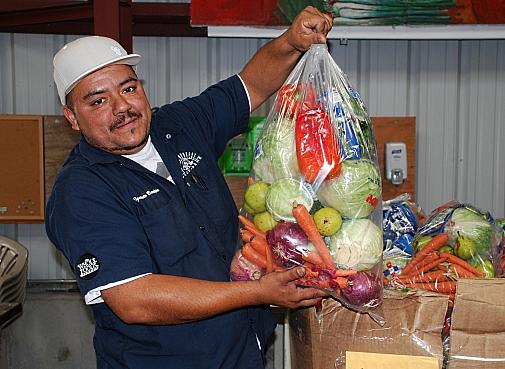Health Journalism Fellowship Improves the Health of Website, and Shows How Food Banks Are Leading The Fight Against Obesity

When we* first launched SantaCruzWire.com in 2008, we were motivated by the loss of independent voices in local journalism, and by the assimilation of our local paper into the Borg collective, (more generally known as MediaNews.) As experienced journalists and involved members of the Santa Cruz community, we knew there were lots of great stories going unreported, we knew we could write them, and finally, that there was a vast publishing platform out there that we could access practically for free.
What we didn't know, but soon discovered, was that website technology and reader interactions with Internet news were evolving at warp speed. We assumed our nifty website software would last for a couple of years, but we were wrong. Our site needed a serious upgrade, and we didn't know where to start.
When we first heard about the California Endowment's Online Community Building and Health Journalism Fellowship, we were immediately interested in the technological support and social media information. And though we were confident about our reporting skills, the fellowship also seemed like a good opportunity to refocus those skills through the lens of new technology and the realities of publishing on the web.
At the first meeting in L.A. we could see that we were not the only ones feeling torn between the desire to do in-depth reporting and the time-consuming demands of marketing that work on social media. However, over time, and with the guidance of our social media mentor, Staci Baird, we came to appreciate how critical it is to reach out to readers via social media, how quickly readers' habits are changing, and how the web is redefining the concept of community.
For instance, we established a Facebook page for our site, which allowed us to disseminate stories more widely and interact more effectively with our readers. On the other hand, we are finding that in such a small community, many readers still choose to contact us personally rather than on the site. We believe this preference for a personal connection is due to the demographics, assumptions and history of our readers. Our readers have smartphones and are well represented on Facebook, but do not yet Twitter, and are not early adopters of other social networking outlets.
However, the biggest boost in readership has come from Google. On the advice of fellow Fellow Eddie North-Hager, we applied and were accepted as a Google News site, which has provided erratic but enormous benefits. (For instance, the first installment of our fellowship series received more than 1,400 hits in 24 hours, a record for Santa Cruz Wire.)
In addition, in response to feedback from the fellowship, we redesigned the site to incorporate the latest social media tabs, add clickable headlines, slideshows, video capability, and improved reader comment access. A thorough software security update improved our search rankings, and assured visitors that our site was reputable.
Finally, we were able to turn to reporting, where we could rely on our reporting mentor Martha Shirk for solid news judgment and editorial oversight, and the occasional stern reminder about deadlines. Martha combines the tradition of serious news reporting with a realistic sense of how news must adapt to the web, which helped us greatly with how our series was structured and presented.
We are very proud of our series on Santa Cruz's Second Harvest Food Bank, a big organization that has quietly launched dozens of programs aimed at reversing the epidemic of obesity-related illness plaguing our community. While Second Harvest is well known in the area, readers were not familiar with its history, varied programs, or current role as a leader within the food banking industry.
We've all read numerous obesity-related articles that come to the topic from a deficit approach. These articles tend to focus on everything that's wrong within a particular community and who or what's to blame. Such approaches frequently stigmatize the target population, furthering their "at risk" identification. It was a pleasure, therefore, to report on an organization that builds on community assets to create lasting change even in the face of multiple challenges.
Through the process of our reporting, we discovered that Second Harvest uses best practices in the food banking industry not only in its gathering, storage and distribution of fresh fruits and vegetables, but also in its education and outreach efforts, which are built on a peer-to-peer model. Their multi-faceted approach builds upon positive relationships between nonprofits, religious organizations, schools, government, community groups, and the farming community.
In the face of many hand-wringing articles, it was our pleasure to report on successful, cutting-edge efforts to combat malnutrition in Santa Cruz County.
One piece of advice to reporters investigating food-support programs in their communities is to look at the quality of food distributed, and not just the quantity, or weight - which is the industrywide norm for measuring food aid. At many food banks, tons of the food distributed are sodas and energy drinks, an increasingly controversial practice. While food banks are tring hard to include fresh fruits and vegetables, the cost of handling perishables can be daunting to struggling nonprofits. Ask how your food assistance agencies are responding to the emerging epidemic of nutrition-related illness, and whether they have outreach programs to educate their clients. As we discovered in our reporting, food dissemination alone is not enough to combat the numerous factors contributing to obesity. Nutrition education and cultural familiarity are critical.
*Maria Gaura and Tara Leonard, co-editors of SantaCruzWire.com, co-wrote this blog entry.

